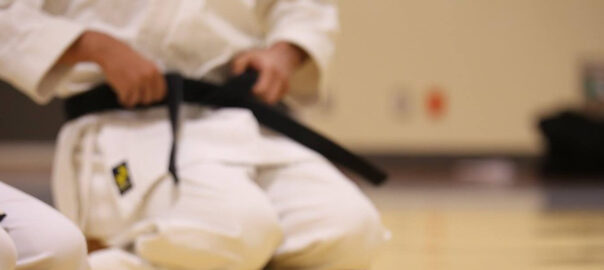Karate with Lionel Froidure – practical applications. In karate, or any other martial art, you can intervene in several different phases. In karate, these are called: go no sen, tai no sen and sen no sen.
Karate with Lionel Froidure online https://www.lionelfroidure.com/
Go No Sen
He attacks Oi Zuki, I block and strike after his attack. I absorb his movement, strike and come back out. We could also do a Go No Sen by pivoting, striking and coming out. It’s still a go no sen. I intervene after the strike. He throws, I block and strike. So it’s in 2 steps.
Tai No Sen
Tai No Sen, it’s the body that moves, the 2 bodies move at the same time. When he attacks, I also attack at the same time, but I step out of his line of attack. I’m in a form where the 2 bodies move, I pivot but attack at the same time. There’s no longer any blocking, just an exit.
Sen No Sen
I must return during the attack. I attack his attack. I have to have a perfect reading to be able to leave at the slightest fault he makes. As soon as he starts to move, I intervene. Even with just peripheral vision, you can do it. As soon as you see something moving, you attack. You have to be under power to move instantly. If you’re behind, you can’t get away. You must attack his attack: Sen No Sen.
Sensen No Sen
In the last sensation, we’re more in a self situation, for example. He’ll think about attacking me. He pushes me and the situation escalates. The attack is imminent. Instead of letting him attack me, I attack first. I attack his intention. I attack before he launches his attack. It’s Sensen No Sen. I attack not an attack, but his intention to attack. I intervene even earlier in time.
So before he attacks, it’s Sensen No Sen. When I attack his attack, it’s Sen No Sen. Tai No Sen, I take out the body. Go No Sen, I absorb, block and strike.
